












Legacy. While its formal definition is that of “a gift by will, especially of money or other personal property,” we know it to hold much greater depth of meaning.
Our legacy is the intangible part of us we leave behind when we take our last breath on this earth. It is the words spoken at a memorial. It is the memories that draw tears from those who loved us.
Men speak often about legacy. Sports stars, business icons, millionaire philanthropists — these are the pictures invoked when we conjure up images of people with legacies.
But I’ve known countless women, especially those with children, who — when speaking about their legacies — refer first to motherhood. When asked their greatest accomplishment, it is unequivocally: “my children.”
Where does that leave those of us who have no choice but to stand outside, watching motherhood from afar through the windowpanes of life? How can we best construe what our legacy might be?
For me, being childless forced me to redefine who I was as a person and what I wanted to leave behind on this earth. I believe whether we have children or not, it’s a helpful exercise to be intentional about our legacy.
Here are a few tips from my 3E Method of Change© for those looking for inspiration to do just that.
We all have dusty boxes hidden in the corner of our minds. From painful memories to joys we gave up on, they are all pieces of who we are and how we see the world.
To build my legacy, I started by unpacking all those boxes and really thinking intentionally about what I wanted to keep and what I was ready to discard.
What pain can you heal, forgive, and release from your attic? What joy can you revisit and bring back into your life? We must get clear on our own personal values. What are we carrying that never truly felt right? Who are we outside of long-held familial and societal expectations?

Duties include:
• Educating residents about their rights
• Encouraging and assisting residents to ask questions and express concerns
• Helping them reach solutions, in collaboration with facility staff and family

Background checks and online/virtual training by PA Department of Aging are required. Schedule and assignments are flexible, based on volunteer’s availability. Visits can be made days, evenings, and/or weekends.
To learn more about this unique volunteer opportunity, contact Robin Work, LTC Ombudsmen Volunteer Coordinator at 717-299-7979 or 1-800-801-3070 or by e-mail at RWork@lancastercountypa.gov.

Answering these questions is the first step to truly knowing the pieces of the legacy that already exist and what you still need to build.

Second, to make space for change, we must eliminate obligations that no longer serve us.
When I prepared to move across the country, I realized just how many commitments I was holding, sitting on eight nonprofit boards, teaching two college classes, and working a full-time job.
I never realized how many times I kept saying yes without ever trading one obligation for another. They just slowly mounted, and I was exhausted. And this was not just a detriment to me, but also to my legacy.
We all have a threshold of effort where we can give our whole selves authentically. After that point, our efforts start to diminish, leaving less of our best selves for the organizations and people we serve.
If we want to live the most robust life of our choosing, we must make the space to be our best selves at every turn. For many of us, that means gracefully declining invitations when rest is needed, stepping out of commitments that do not properly align with our ultimate goals, and finding ways to remove challenges that unnecessarily steal our time.
Finally, once you decide what you believe is your legacy, you must be steadfast to stay on and protect that path. That means making every decision about your time and talents through the lens of “this gets me closer” or “this detracts from my plan.”
Over time, I have become resolute that my legacy is built on service to others and experiencing the world in its entirety. This is how I want to prove to myself and the world that I can make an impact without being a parent.

Travel has proven to be a priceless commodity in developing who I am as a human, teaching me culture and traditions, vulnerability and openheartedness, creativity and solitude. I have been privileged to witness the best of humanity and the evil remnants of the worst.
And it has allowed me to give my time and human capital for the benefit of others around the world. This is the legacy I choose to leave.
From those of us who cannot claim motherhood on our life scorecards, there is only us. Whatever we want to give to this world has to come from us. Every choice we make defines the legacy we leave behind. So, make it grand. Make it bold. Make it yours.
Education, nonprofit, and workplace expert Melanie Sue Hicks, author of Incongruent : Travel, Trauma, Transformation, is an adventure-seeking socialimpact advocate who has led or participated in more than 50 service projects in 20 cities and four international locations. Hicks has been published in and interviewed for more than two dozen magazines and websites. melaniehicks.org
Based on the 1984 movie, the spirited dancing and nostalgic hits like hits like “Footloose,” “Let’s Hear It For The Boy,” and “Almost Paradise” will have you cutting footloose.
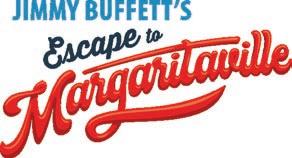

MAY 26 -
JUNE 24
This official bio-musical spans from his impoverished childhood to his ascent to stardom as “The King.”
A must-see for Elvis fans.
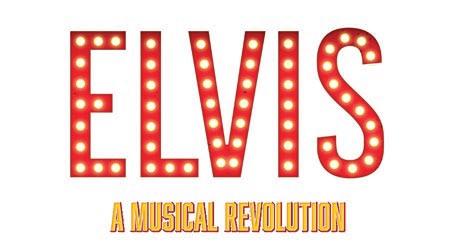
JUNE 30 - AUG 5
AUG 11 - SEPT 16
THE MUSICAL




SEPT 22 - NOV 11
NOV 17 - DEC 30
SAVE UP TO 20% WITH A SEASON MEMBERSHIP
The more shows you book, the more you save!

Corpor AtE offiCE
P.O. Box 8049, Lancaster, PA 17604
Phone (717) 285-1350
(610) 675-6240
Fax (717) 285-1360
Email address: info@onlinepub.com
Website address: www.onlinepub.com

prESiDENt AND pUBLiSHEr
Donna K. Anderson
EDitoriAL
Vice president and Managing Editor
Christianne Rupp
Editor, 50plus publications

Megan Joyce
Art DEpArtMENt project Coordinator
Lauren Phillips
BUSiNESS DEVELopMENt
Senior Marketing Consultant
Joshua Binkley
Events Manager
Kimberly Shaffer
ADMiNiStr AtioN
Business Manager
Elizabeth Duvall
Jim Beamenderfer remembers how excited he was when he first started hearing rumors that Lancaster was getting a minor league baseball team.
“I always said, if it happens, I’m going after a job at the stadium. I just thought it was great that Lancaster was getting a minor league team!”
Well, it did happen in 2005, Beamenderfer did go after that job, and he’s been a proud usher at Clipper Magazine Stadium, home of the Lancaster Barnstormers, ever since.

A diehard baseball fan, Elizabethtown native Beamenderfer really became interested in the sport when he was still in high school.
“Gene Garber, who was from E-town, started pitching for the Pirates, a major league team,” he said. “I thought, ‘Here is this cool guy in the majors, and he’s from the same town that I’m from!’”
Beamenderfer said.
Because he worked as a radio announcer and DJ in the past, Beamenderfer has a great deal in common with the press box staff.
“I love Patsy Kline, and our DJ never plays her for me, except one night, when I was clearing the seats, he played one of her songs as a surprise, and I almost fell down the steps!”
A big benefit of working at the stadium all these years is getting to know the loyal fans who faithfully attend the games.
“We have really great fans. I enjoy talking baseball with them, although sometimes they want to talk longer than I’m able,” he said. “I do have a job to do, and although I am able to watch the game, I also have to keep an eye on the fans.”
Member of
So what better part-time job could there be for a baseball fan than actually working at a ballpark, getting paid and being able to watch the games at the same time?
Awards
50 plus Life is published by On-Line Publishers, Inc. and is distributed monthly among senior centers, retirement communities, banks, grocers, libraries and other outlets serving the senior community.
On-Line Publishers, Inc. will not knowingly accept or publish advertising which may be fraudulent or misleading in nature.

Views expressed in opinion stories, contributions, articles and letters are not necessarily the views of the publisher. The appearance of advertisements for products or services does not constitute an endorsement of the particular product or service. The publisher will not be responsible for mistakes in advertisements unless notified within five days of publication. On-Line Publishers, Inc. reserves the right to revise or reject any and all advertising. No part of this publication may be reproduced or reprinted without permission of On-Line Publishers, Inc.
We will not knowingly publish any advertisement or information not in compliance with the Federal Fair Housing Act, Pennsylvania State laws or other local laws.
Typically, Beamenderfer works April through mid-September and has a lot of flexibility in his work schedule.
“For example, if there is a seven-home-game stretch, I might work four out of the seven,” he said. “We submit our availability, and the Clipper staff are great to work with us to make it happen.”
Beamenderfer is responsible for making sure the seats in his assigned section are clean “in case the birdies fly over,” he said, while also keeping an eye on trash.
He helps people find their seats, but as the years have gone by, “we have a lot of regulars who come to the games, and they’re pretty familiar with the layout of the stadium,” Beamenderfer explained. “The stadium is really well marked.”
Although he doesn’t work in the same section each time, he has his favorite section assignments.
“I really enjoy working behind home plate because I’m close to the press box, and the guys in the press box are great, so much fun to interact with,”
There have been a few times when fans have suffered minor injuries, and in those cases the medical staff has been called to check on the situation. Beamenderfer said there haven’t been any security issues he’s been involved with.
“Our fans are great, really well behaved,” he said. “It’s a very family-friendly ballpark.”
Since the stadium opened in 2005, only Beamenderfer and one other gentleman have been working as ushers continuously.
“Bob and I have been here since it started,” he said. “But it can be exhausting, especially on hot nights, with all those stairs, and we’re not getting any younger! We just take it slower, but we still get the job done.”
There are many retirees working part-time jobs within the park, not only as ushers, but also as ticket takers, as parking attendants, and as part of the cleanup crew.
“We had an usher work up until he was at least 90,” Beamenderfer said. “His name was Dusty; he was a great guy. There is a banner behind section 17 honoring him.”
Not only is the stadium used for baseball, but other events are also hosted there throughout the year, and Beamenderfer has had the opportunity to work as an usher for some of those.
“I have worked some concerts, which I really enjoy because I love music,” he said. “We’ve also
had graduations, tradeshows, and band competitions. It’s just neat how the stadium is used all year as a place for the community to hold events.
“I’ve been to other independent minor league ballparks, some newer than ours, and I just don’t think they’re nearly as nice or well kept,” he said. “This is really a beautiful stadium, and it’s done a lot for the area, and I think it’s been great for the city of Lancaster.”
Although COVID put a damper on things for a while, “attendance was really good last year,” Beamenderfer said. “Of course, we had a great second half of the season, so people really came out to support the team.”
After 18 years of ushering, Beamenderfer has no plans to stop any time soon.
“I love being outside, and I love the ballpark atmosphere,” he said. “I’ll keep doing this as long as I’m able. It’s a fun place to be, it’s a great organization to work for, and the fan base is very loyal. That tells you something about the quality of the experience people have at our ballpark.”

WSA addresses the unique challenges that well spouses face every day. If you could benefit from this information, please join us!

Meetings held 2nd & 4th Wednesdays of the month 7:00 p.m. – Wegmans, 2000 Crossings Blvd., Lancaster, PA 17601

The program will repeat 3 times that day and Saturdays from 11-11:30 a.m.
This audio broadcast is one of the many ways Vision Resources facilitates independence, enriches quality of life, and empowers individuals in our community who are visually impaired.

And it’s one more way 50 plus Life and On-Line Publishers are continuing 25 years of serving the mind, heart, and spirit of the 50plus community.

After more than two decades appraising art, antiques, and collectibles and training my followers to identify valuables and resell for profit, I want to share some of the most successful tips that people have used to cash in on items available at estate, yard, and garage sales.
No matter where you are shopping for old items to flip, damage is always a no-no. If something is damaged, the cost of restoring it could be high.
So before you pick up and pay for that tattered 19thcentury quilt or broken lithograph tin wind-up toy, consider its condition. You’ll be glad you did.
If you decide to ignore this warning and buy a damaged piece and get it restored, make sure you know the cost of the restoration. Ask the restorer for before-and-after photos of his/her work on a similar piece. Inquire about insurance coverage while your antique is in a restorer’s care.
The treasure hunt is always exciting. When it comes to board games,

• Your focused message reaches its targeted audience.


• Multi-venue promotion — online, in print, and through social media platforms.



• Year-round distribution — annual Women’s Expos and 50 plus EXPOs, local offices of aging, and other popular venues.




toys, electronics, objects with accessories, and many more vintage and antique items, the package, box, or presentation displays for an item are valuable.
Having all of the pieces is also a vital aspect to establishing value. If you can hunt around the yard sale tables or estate sale shelves for that missing chess piece or lamp base, it will be worth it.
Ask the yard sale host if they know the location of any of the missing parts or other accessories. This simple question will help you make money as you build your collection or resell your find.
There is a longstanding myth in the art and antiques world that a piece must be signed, marked, or labeled to be valuable. This is just not true.

Sure, it is good to have documentation, signatures, marks, etc., but it is not the holy grail when it comes to identifying valuable art, antiques, or collectible objects.
While documentation — in its many forms, such as signatures, original labels, backstamps, or other marks — is important, it is not the only thing to look for when assessing a valuable item at a yard sale or estate sale.

For example, some antiques and art items were created in certain eras. For instance, most Colonial American paintings, while valuable, were not signed by the artist. It was thought that these pieces should not be signed out of respect for the sitter or person who commissioned the painting.
With certain valuable ceramics, marks were not included on some pieces.

Some of the most desirable and valuable objects in the antiques arena fall into these three categories: fine art, furniture and home décor, and precious metals, including jewelry. Don’t overlook these objects.
Ph.D. antiques appraiser, author, and award-winning media personality Dr. Lori presents antique-appraisal events nationwide and appears on History channel’s The Curse of Oak Island and Pawn Stars Do America. Visit d rloriv.com, watch her Real Bargains show to find valuables at bargain prices on youtube.com/drloriv, or call (888) 431-1010.













Listings with a screened background have additional information about their services in a display advertisement in this edition. This is not an all-inclusive list of agencies and providers. These advertisers are eager to provide additional information about their services.
BETHANy VILLAgE – THE OAk S

325 Wesley Drive • Mechanicsburg, PA 17055 717-766-0279 • www.bethanyvillage.org
Number of Beds: 69
Skilled Licensed Nursing: Yes
Therapy: Speech, Occupational, Physical Rehabilitation Unit: Yes
Short-Term Care: Yes
Long-Term Care: Yes
Alzheimer’s Unit: Yes
Private Rooms: Yes
Semi-Private Rooms: Yes
24-Hour Medical Care: Yes
Security System: Yes
Staff Background Checks: Yes
Internet Access: Yes
Recreational Activities: Yes
Scheduled Entertainment: Yes
Medicare: Yes Medicaid: Yes
Accreditations/Affiliations: CARF, Eagle, LeadingAge PA
Comments: Maplewood Assisted Living also available.
HOMELANd CENTER
1901 North Fifth Street • Harrisburg, PA 17102-1598 717-221-7902 • www.homelandcenter.org
Number of Beds: 120
Skilled Licensed Nursing: Yes
Therapy: Speech, Occupational, Physical Rehabilitation Unit: No
Short-Term Care: Yes
Long-Term Care: Yes
Alzheimer’s Unit: No
Private Rooms: Yes
Semi-Private Rooms: Yes
24-Hour Medical Care: Yes
EPHRATA MANOR 99 Bethany Road • Ephrata, PA 17522 717-738-4940 • ucc-homes.org
Security System: Yes
Staff Background Checks: Yes
Internet Access: Yes
Recreational Activities: Yes
Scheduled Entertainment: Yes
Medicare: Yes Medicaid: Yes
L ANCASTER REHABILITATION HOSPITAL 675 Good Drive • Lancaster, PA 17601 717-406-3000 • www.lancasterrehabhospital.com

Number of Beds: 95
Skilled Licensed Nursing: Yes
Therapy: Speech, Occupational, Physical Rehabilitation: Yes
Short-Term Care: Yes
Long-Term Care: Yes
Alzheimer’s Unit: Yes
Private Rooms: Yes
Semi-Private Rooms: Yes
24-Hour Medical Care: Yes
Security System: Yes
Staff Background Checks: Yes
Internet Access: Yes
Recreational Activities: Yes
Scheduled Entertainment: Yes
Medicare: Yes Medicaid: Yes
Accreditations/Affiliations: AAHSA, Leading Age of PA, NHPCO, PHPCN, PHA, HPNA, CAPC

Comments: A beautiful, full-service continuing care retirement community with a history of over 155 years of exemplary care.
PLEASANT ACRES REHABILITATION ANd NURSINg CENTER

118 Pleasant Acres Road • York, PA 17402 717-840-7153 • www.pleasantacresnursing.com
Number of Beds: 59
Skilled Licensed Nursing: No
Therapy: Speech, Occupational, Respiratory, Physical Rehabilitation Unit: Yes
Short-Term Care: Yes
Long-Term Care: No
Alzheimer’s Unit: No
Private Rooms: Yes
Semi-Private Rooms: No
24-Hour Medical Care: Yes
Security System: Yes
Staff Background Checks: Yes
Internet Access: Yes
Recreational Activities: No
Scheduled Entertainment: No
Medicare: Yes Medicaid: Yes
Comments: Acute inpatient rehab hospital offering intense rehabilitation to get you home sooner and safer.
STONERIdgE RETIREMENT LIVINg COMMUNITIES 440 East Lincoln Avenue • Myerstown, PA 17067 717-866-3200 • www.stoneridgeretirement.com


Number of Beds: 375
Skilled Licensed Nursing: Yes
Therapy: Speech, Occupational, Respiratory, Physical Rehabilitation Unit: Yes
Short-Term Care: Yes
Long-Term Care: Yes
Alzheimer’s Unit: Yes
Private Rooms: Yes
Semi-Private Rooms: Yes
24-Hour Medical Care: Yes
Security System: Yes
Staff Background Checks: Yes
Internet Access: Yes
Recreational Activities: Yes
Scheduled Entertainment: Yes
Medicare: Yes Medicaid: Yes
Comments: For short-term surgical recovery or long-term rehabilitation, we are here for all of your healthcare needs!
Number of Beds: 321
Skilled Licensed Nursing: Yes
Therapy: Speech, Occupational, Physical Rehabilitation Unit: Yes
Short-Term Care: Yes
Long-Term Care: Yes
Alzheimer’s Unit: No
Private Rooms: Yes
Semi-Private Rooms: Yes
24-Hour Medical Care: Yes
Security System: Yes
Staff Background Checks: Yes
Internet Access: Yes
Recreational Activities: Yes
Scheduled Entertainment: Yes
Medicare: Yes Medicaid: Yes
Accreditations/Affiliations: LeadingAge PA, PADONA
Comments: Mission driven, full-service continuing care retirement community with a history of almost a century of exemplary care.
if you would like to be featured on this important page, please contact your marketing consultant or call (717) 285-1350.

Tulip trees and sweet gum trees are attractive, native species that dominate much of the Southern Coastal Plain of extreme southeastern Pennsylvania to Georgia.
These deciduous trees are also commonly planted on lawns in southeastern Pennsylvania because of their beauties at different times of year and the shade they cast. And both these lovely trees feed different species of wildlife.

Common in southeastern Pennsylvania, tulip trees grow tall, straight trunks and uniquely shaped leaves that resemble headless birds in flight.
Each leaf has two “wings”; a broad, forked “tail”; and a long, thin “neck,” the petiole. Those leaves turn yellow in autumn when they die and their green chlorophyll fades. Tulip tree foliage helps brighten many woods in fall.

Tulip trees’ flowers bloom in the middle of May, and each lovely, 2-inch blossom is shaped like a tulip. Each flower petal is light green with an orange base. Those bases together create a ring of orange on the bottom of each blossom. A variety of flies, bees, and other insects sip nectar from tulip tree blooms, pollinating them in the process.
The many resulting dull-brown seeds of each fertilized flower grow on a pointed, 2-inch spike. Each seed has a thick part that houses the embryo and a flat, thin blade that spins the seed away on the wind and across the countryside.

Mice, squirrels, and chipmunks ingest many tulip tree seeds lying on the ground. And squirrels consume many others still attached to their spikes in the trees.
Each unique sweet gum leaf has five points that make it look like a star. In October, those leaves become a striking red, yellow, or maroon, all those bright colors on each beautiful tree.
Each sweet gum tree produces many round, dull-brown seed balls that are about an inch across. Each ball is covered with holes where the tiny, dark seeds sprinkle out when mature and soft bristles that protect those cavities. Many of the seeds that fall out of the balls blow away on the wind.
But many other seeds are eaten by a variety of attractive finches and sparrows during winter. Those small birds pick the seeds out of the balls, whether they are attached to their twig moorings or lying on the ground. And those birds also pick up seeds that blew around in the wind and finally settled on the ground.









Either way, those birds add their beauties to that of sweet gums and the habitats those trees grow in.

Sweet gums are getting better established in southeastern Pennsylvania. Seeds from planted sweet gums sprout and grow in abandoned fields and along rural roadsides.
Tulip trees and sweet gums are beautiful trees that are commonly planted on southeastern Pennsylvania lawns because of their beauties and the shade they provide. And these trees feed certain kinds of wildlife, both in woods and on lawns.


“Dear loved ones ...”
That’s a good start to a long story, isn’t it? Those three words leave a lot of space for family tales and sharing the awkward, funny, happy, horrible things that you remember.
But though there’s room for questions, answers, and emotions, you write “Dear loved ones ...” and you’re stalled. So now what? In Yours Truly by James R. Hagerty, it’s time to pick up a pen. What will people say about you when you’re gone?

If you’re rich, famous, powerful, or important, you probably don’t need to worry. Someone like Hagerty, who creates obituaries for a living, will do a quick internet search and write a few glowing words about you.
Yours Truly: An Obituary Writer’s Guide to Telling Your Story
 By James r . Hagerty c. 2023, Citadel press 224 pages
By James r . Hagerty c. 2023, Citadel press 224 pages
But if you’re like most folks, one of your grieving relatives will dash off an obit that — well, let’s face it: It’ll be boring.
You can do something about that now, though. You can write your own story.
An obituary, Hagerty says, can be short or long. You don’t have to follow a template or formula, you can use humor in it, and you can write it now.
To begin, ask yourself three questions: What have you been trying to accomplish with your life? Why? And how did that work for you?
If you’re not used to doing so, Hagerty says to set a small amount of time aside for writing, maybe 15 minutes a day. Keep a notebook handy for things that pop into your head, and jot them down. If writing seems like a burden, record your words digitally, but don’t try to do it all at once or you’ll burn out and miss some recollections.


Include your date of birth, siblings’ names, what your parents did for their livings, your early hobbies, how you met your spouse, military service, things you hated to do, and all the stories you loved to tell throughout your life.
Give details but don’t boast. Ask the deep questions. And finally, be brave and include embarrassments.
Says Hagerty, “Admit that things didn’t always go as you had planned.”
Chances are that most people will pick up Yours Truly as a sort of primer on leaving a life’s legacy to children and grandchildren, which is good. That’s how this book is intended.

But while you’re learning how to preserve your stories and write your own obituary, Hagerty gives you something else to do, too: He’ll entertain you with dozens and dozens of obits from (above-) average people.



Don’t be surprised, in fact, if you somehow forget about penning your story while you’re reading about the lives of everyday people like you. Those folks lived their best lives unremarkably, and though their tales aren’t earthshattering, they come in waves of irresistibility.
Hagerty hints that the everyman tales are here to serve as examples, and you should take them as such.
You should also take them to a comfortable chair, along with a pen and paper or a recording device. Read Yours Truly for yourself. Do it for the ones you love dearly.
The Bookworm is Terri Schlichenmeyer. Terri has been reading since she was 3 years old, and she never goes anywhere without a book. She lives on a hill in Wisconsin with two dogs and 14,000 books.

Estate planning, elder law, asset protection planning, Medicaid planning, crisis Medicaid planning, special needs planning, and lifecare planning.

Estate planning, wills, trusts, powers of attorney, living wills/advanced healthcare directives, estate administration, guardianship, Medicaid planning, crisis Medicaid planning, veteran benefits, and special needs planning.
Serving all of Pennsylvania in person, virtually, or via phone. Offers estate planning “peace of mind” package that includes the three critical documents (simple will, durable power of attorney, and living will/healthcare directive) for only $200/person.
Trust, Medicaid planning, asset protection planning, streamlined probate planning, probate and trust administration, and guardianships.
Estate planning, wills, financial powers of attorney, durable healthcare powers of attorney (living wills), guardianships, Medicaid planning, and estate administration. Offices in Lancaster, Columbia, Elizabethtown, and Quarryville. if you would like to be featured on this important page, please contact your marketing consultant or call (717) 285-1350. * Indicates that at least one attorney in the firm is a member. Information contained herein was provided by the firm.
Playing with small, round balls may have started with cave people. Clay balls have been found in the tombs of Egypt, in Native American burial grounds, and in the ancient Aztec pyramids.
Smooth stones, nuts, fruit pits, and fired balls of clay were used for games. In the 1700s the globes were made of white alabaster, a marble stone — hence the name “marbles.”
Hand-blown glass marbles were made in Germany between the 1860s and 1920s. A “glass marble scissors” had been patented to cut the ball of molten glass, thus creating small globes.
In the heating of the glass, the form was rolled in colored sand, creating the patterns in the marbles. Swirl-design marbles were made into the 1920s. The German glass-blowing companies closed after World War I.
Machine-made marbles were created in America during the 1920-1940s. The Christensen Agate Company of Akron, Ohio, produced a machine where hot glass was dropped onto steel rollers to shape the glass into smooth marbles.
Recognized names like Akro Agate, Peltier Glass, and Master Made Marbles made marbles of baked clay, glass, steel, plastic, onyx, and agate. By the 1940s, the Catseye, produced in Japan, became the most popular marble of our era.

Today, Vacor de Mexico is the largest maker of machine-made marbles, producing over 90% of the world’s supply.


The individual marble names may relate to their use, such as the “shooter.” Others are named for the material they are made of, such as “Steelies” from steel and “Alleys” from alabaster. Flints, Cloudies, Corkscrews, and Peerless Patches refer to the appearance.
Other names include China, Aggie, Commie, End of Day, Bennington, Onion Skin, Mica, Bamboozer, Popeyes, Sparklers, and Moonies.
The standard marble is a half-inch in diameter. These small marbles are called “ducks” or “mibs.” They are the marbles that players try to knock out of
please see MArBLES on facing page



We are looking for central Pennsylvanians over age 50 who have a unique hobby, passion, or history of volunteer work, or who are a part of an interesting local club.

Ideal story candidates are willing to talk about themselves and to be photographed.
Your name: _______________________________________________________________
Your address: ____________________________________________________________________
Your phone: ________________________________________ Email:_____________________________________________
Nominee’s name (if not self): ____________________________________________________________________________
Nominee’s town of residence: ___________________________________________________________________________
Nominee’s phone: __________________________________ Email: _____________________________________________
Why they would make a great story: _____________________________________________________________________
Note: Please get your nominee’s permission before submitting them!
please email story submissions to Megan Joyce, editor, at mjoyce@onlinepub.com or send via mail to 50plus Life, p.o. Box 8049, Lancaster, pA 17604.
The Little Mermaid is a fairy tale written by the Danish author Hans Christian in 1837 and first published as part of a collection of stories for children.
Walt Disney’s The Little Mermaid was an animated musical fantasy originally planned in the late 1930s as one of Disney’s earliest feature films, although it was never made until 1989.
This year’s The Little Mermaid comes to us as a live-action remake. It also breaks down some long-established barriers, especially with its diverse casting.
As the star, powerhouse vocalist Halle Bailey (onehalf of the R&B sister duo Chloe x Halle) debuts as Ariel, a mermaid who until now has always been portrayed as being white.
Director Rob Marshall and the scriptwriters, happy to shatter stereotypes, also seized the opportunity to better flesh out Ariel’s love: “The role of Eric in the animated film — I’m sure the original creators will agree with this — is a wooden, classic prince character with not a lot going on,” says Marshall.
“There’s a whole story that’s developed in our film. He has a very similar trajectory in a way to Ariel: He doesn’t feel like he fits in, in his world. These two kindred spirits find each other and really teach the world about prejudice and about breaking down barriers and walls between these two worlds.”
When casting Ariel for The Little Mermaid , Marshall stresses there were no
MArBLES from facing page
the ring drawn on the ground. The large marble, called the “shooter” or “taw,” is generally threequarters of an inch in diameter and is used for shooting the “mibs.”
There are hundreds of variations of marble games. The classic game, ring taw, or ringer, was the most popular game in the United States. A 3-foot ring is drawn on the ground with 10-15 small marbles (mibs) placed within it. Players take turns attempting to knock them out of the ring from outside the circle.
In advance, players agree to play “for fair,” which means every player keeps their marbles. Or to add excitement and drama, many play “keepsies” (for keeps), where the player who knocks all the marbles out of the ring gets to keep all the marbles.

If the shooter does not knock a marble out of the ring, it remains in the circle. If a player then knocks your shooter out of the circle, they instantly win.
well-defined agendas controlling matters.
“We just were looking for the best actor for the role … The goal was to find someone who can be passionate, beautiful, smart, and clever, and with a great deal of fire and joy.”
Naturally, top-notch vocal skills were also a primary requirement.
“That voice is something that is so signature and so ethereal and so beautiful that it captures the heart of Eric,” explains Marshall.
In Disney’s 2023 release, we are again offered the beloved story of Ariel, the beautiful and resolute young mermaid possessing both bravado and a thirst for adventure. The youngest daughter of King Triton (Javier Bardem), headstrong Ariel longs to find out more about the world beyond her familiar sea.

In doing so, she becomes smitten with the dashing human prince Eric (Jonah Hauer-King). Mermaids are forbidden to interact with humans, but Ariel chooses to follow her heart and makes a deal with the evil sea witch Ursula (Melissa McCarthy).
This gives the underwater adventurer a chance to experience life on land, but ultimately it also places Ariel’s life — and her father’s crown — in jeopardy.
The Little Mermaid opens nationwide on May 26.
Randal C. Hill enjoys getting sneak peeks of forthcoming movies from his home on the Oregon coast. He can be reached at wryterhill@msn.com.

If this does not happen, the player shoots from within the ring on their next play.
Marbles were very popular until World War II. The game waned as kids were drawn to TV (Saturday morning cartoons), followed by video gaming. A resurgence in the 1970s revived the game, or at least marble collecting, with largescale collector competitions.
Several YouTube videos have good discussions of marble values that vary by type, production method, and age. A single marble can be priced from $1 to $100. You must know your marbles.
Marbles are now a nostalgic memory of the past. Few play today.
Doris Montag is a homespun historian and an exhibit curator who researches and displays historical collections of ordinary things, such as can openers, crochet, toy sewing machines, hand corn planters, powder compacts, egg cartons, and more. Contact or follow her on Facebook, HistoryofOrdinaryThings.
In the year following a stroke, about 1 in 3 stroke survivors will experience spasticity, a common poststroke condition that causes muscle stiffness due to involuntary muscle contractions.
Most commonly affecting the elbow, wrist, and ankle, the condition may make it difficult to do activities people were able to do before their stroke like dressing, brushing their teeth, or walking.
More than 3 million stroke survivors may wrestle with reduced independence and increased reliance on caregivers due to spasticity. The condition is particularly common in younger stroke survivors.

After a stroke, the way your brain communicates with your muscles may change. Muscles may be stiff or resistant to stretching. They may involuntarily contract or have a smaller range of motion.
“While there’s no cure for spasticity, working with your care team to find the best treatment options for you can help provide comfort, relief, and independence,” said Richard D. Zorowitz, MD, volunteer past chair of the American Heart Association’s Stroke Council Rehabilitation and Recovery Committee and chief medical informatics officer and outpatient attending physician at MedStar National Rehabilitation Network.
Some common symptoms include painful muscle spasms; difficulty stretching muscles; stiffness in the arm, hand, leg, and ankle; an arm folded and pressed against the chest with a curled wrist and fingers; an involuntary tight fist; pointed foot; curled toes; and overactive reflexes.
If left untreated, spasticity can cause painful and debilitating bone and joint
deformities. Experts stress seeing a doctor as soon as symptoms develop. Assessment of the condition is critical in developing a treatment plan based on individual needs and goals, the severity of the condition, and overall health.
Management plans may include targeted injections of botulinum toxin, oral medications, intrathecal baclofen pump therapy, physical therapy, or other methods to improve the muscles’ ability to stretch and regain range of motion. Home modifications, such as assistive devices and other adaptations to increase independence and safety, may also help.
If you or a loved one is dealing with spasticity after a stroke, talk to your doctor or health care team about options to treat and manage it. Find resources and tools to help at stroke.org/spasticit y. Spasticity education made possible through funding by Ipsen.
When Herbert “Hub” Miller worked as a global leader for an international agriculture science company, his boss ended every meeting with a reminder of the “FAST” acronym to recognize the signs of stroke: Face drooping, Arm weakness, Speech difficulties, and Time to call 911.
“I’d sit back and think, ‘Here comes the whole FAST speech again; let’s move on,’” Miller said. “I didn’t know I’d ever use it on myself.”
In April 2021, Miller was working from home when he experienced throbbing
About Us – The Lancaster County Office of Aging (LCOA) was established 45 years ago as a result of the passage of the Older Americans Act. This act directed states to develop a network of services and supports to help keep older adults healthy and independent.
The Pennsylvania Department of Aging was created to fulfill this mandate. In turn, a network of 52 Area Agencies on Aging (AAA) was established throughout the commonwealth to carry out this mission at the local level.
Maintaining the independence and quality of life for Lancaster County’s aging population through information, protection, services, and community support
Our Philosophy:
u Support the older person’s right to decide his/her own destiny. Encourage consumer self-determination and choice.
u Support the older person’s right to risk.
u Promote independence and dignity.
u Avoid unnecessary/inappropriate institutionalization.
Funding for aging-related services is a combination of state and federal monies, with the Pennsylvania Lottery providing the major source of funding.
In Lancaster County, the AAA is part of county government. We are dedicated to providing Lancaster County residents, 60 years of age and older, with a wide range of informational resources and services as well as advocacy efforts and elder abuse protection.
The LCOA offers the following services:
• Information and referral services
• Long-term living assessments
• Home and community-based support services
• Protection from abuse and neglect
• APPRISE, Medicare, and related health insurance counseling
• Senior center services
• Adult daily living services
• Caregiver support
• Employment
• Ombudsman services
• Transportation
• Legal services
• Health and wellness programming
• Volunteer opportunities
For more information, please call us Monday – Friday from 8:30 a.m. – 5 p.m. at 717-299-7979/1-800-801-3070, visit our website at www.lancoaging.org , or email aging@co.lancaster.pa.us.
head pain. As other symptoms began appearing, the 42-yearold remembered those meetings and checked off the symptoms: His face was numb, his left arm drooped, and he struggled to form words.


It turned out to be a hemorrhagic stroke, a ruptured blood vessel bleeding into the brain. Miller’s odds of surviving weren’t good, but it wasn’t until he was recovering in intensive care that he understood the full impact of the stroke.


It caused abnormal increases in muscle tone causing stiffness, pain, and spasms known as spasticity, leaving him with mobility and cognitive challenges.


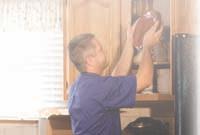
After the stroke, Miller struggled with once-simple tasks like drawing a clock, completing a word puzzle, and playing memory games.

“Spasticity changed my life and added an additional hurdle to my stroke recovery,” Miller said. “Without being able to open and close my left hand, I can’t write, type, or drive like I used to. Those are things most of us take for granted until we can’t do them.”
Miller worked on his penmanship at the same time his youngest son learned to write in the first grade. Miller asked the teacher to send home extra worksheets, and father and son did homework together.
“I don’t measure my success day by day, but when I look back to a year ago and where I am today, I am grateful every day how far I have come,” he said.
(Family Features)


Laurie Forster will share her passion for food and wine. Using her down-to-earth approach to “wine education,” Laurie will demystify the wine industry and explain which foods pair best with each wine. Beef and wine samples will be served immediately following. Laurie will sign copies of her book, e Sipping Point A Crash Course in Wine

Sponsored by the PA Beef Council




Bring your antiques and vintage thrift shop finds for an expert appraisal by Dr. Lori, star appraiser from the the History channel’s e Curse of Oak Island and Pawn Stars Do America. No standing in line! Plus, Dr. Lori shares tips on how to sell your stuff for profit. Dr. Lori’s YouTube channel @DrLoriV has over 32 million views, and she reviews approximately 20,000 objects a year.
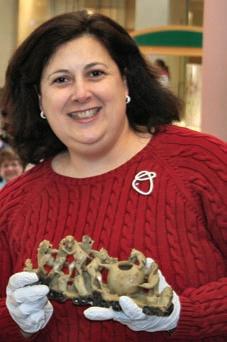

The 50 plus EXPO, central Pennsylvania’s one-day information and entertainment event focused on the 50-plus community, will return to Lancaster County this spring.
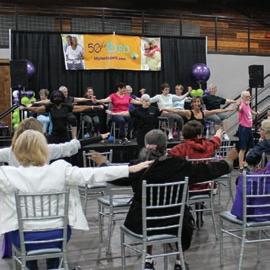


The 24th annual Lancaster County 50 plus EXPO (Spring) will be held from 9 a.m. to 2 p.m. on Wednesday, May 10, at Wyndham Resort, 2300 Lincoln Highway East, Lancaster.



Hosted by OLP EvEnts and the Lancaster County Office of Aging, the EXPO’s exhibitors will provide up-to-date information focused on the health, lifestyle, and needs of the local 50-plus community.

Admission and parking are free. Charles F. Snyder Funeral Home & Crematory will be providing free shuttle transportation through the parking lot to the EXPO entrance.
In addition to no-cost health screenings and information, guests can enjoy onstage entertainment and seminars, including an interactive fitness demonstration, a cardiologist-led discussion of heart disease, a presentation on easy meal solutions, and a performance by a national award-winning Elvis Presley tribute artist.

Sponsors include 50 plus Life, Blue Ridge Communications, BUSINESSWoman, Capital Blue Cross, Highmark Blue Shield, Landis Communities, LeafFilter Gutter Protection, Madden & Gilbert Physical Therapy, and UPMC, as well as LCTV, WHTM abc27, WHYF and Sweet 16 WPDC, The Oldies Station.


For updates, please visit 50plusExpoPA.com.
9:45 a.m. – Sally’s Iron Mustangs and Sensational Seniors
Presented by Sally Winchell, Wellness Director, Brightside Opportunities Center


This dedicated group of “fitness freaks” has come to understand the importance of building muscle to be strong for daily living, to rev up metabolism, and to increase bone density. With twice-weekly workouts, they are not only improving their strength, endurance, balance, and flexibility, but they are also improving their overall health with a lifestyle of regular exercise and healthy nutrition.
10:30 a.m. – Thrive after 50
Presented by Willis Godon, D.O., UPMC

Rotator Cu and Shoulder Pain Workshop with Connor Pierce DPT


11:15 a.m. – Let’s Take a Virtual Store Tour and Find Easy Meal Solutions
Presented by Marda Heuman, RDN, LDN, Pennsylvania Division Nutritionist, Wegmans Marda Heuman, a registered dietitian with Wegmans, will take you on a virtual tour around the store to find easy ways to get simple meals on the table with minimal prep. Marda has been a dietitian for close to 30 years in various settings, the past 12 at Wegmans.
Noon – Elvis Presley Tribute Artist Performance

Presented by Jeff Krick Jr.
At only 25, Reading native Jeff Krick Jr. is one of the most successful Elvis tribute artists in the country. At age 19, Jeff placed No. 6 in the world at the prestigious Ultimate Elvis Tribute Contest and in the top 10 at the Images of the King Contest in Memphis. He is a two-time fan-favorite award winner and three-time top 10 finalist at Maryland’s Ocean City Tribute Festival. Jeff has headlined cruise ships and numerous Elvis music festivals.
AttheRotatorCu
A sure- re way to pick the right treatment for the cause of your pain. What successful treatment and permanent relief looks like without the side e ects of medications, injections, or surgery.
717-991-1753 to register

Plans starting at
Capital Blue Cross Medicare
AAA Central Penn

AAA gift bag with free one-year AAA classic membership ($150 value)
AccentCare Hospice & Palliative Care Fruit basket ($25 value)
Geisinger Health Plan



Geisinger swag (value TBD)
The Groffs Family Funeral Home Various raffle items ($50 value)
HearingLife
Gift card ($25 value)
Highmark Blue Shield Basket of health and wellness items ($15 value)
Landis Communities Box of Miesse candies ($22 value)
Realty ONE Group Unlimited – Mike Julian and Missy Boots Gift card to the Belvedere Inn ($50 value)


Lancaster County Career and Technology Blood pressure screening

Stop by AAA’s Mobile Branch cargo van for help with many AAA services, such as notary service, passport photos, theme park tickets and more!

 Jim Miller
Jim Miller

Dear Savvy Senior, Can you recommend any good online hearing tests? My husband has hearing loss, but I can’t get him to go in and get his hearing checked, so I thought a simple online test could help him recognize he has a problem. What can you tell me?
– Loud-Talking Linda
Dear Linda,
There is actually a growing number of very good online and app-based hearing tests available that will let your husband check his hearing on his own. These tests are a quick and convenient



option for the millions of Americans that have mild to moderate hearing loss but often ignore it or don’t want to visit an audiologist for a hearing exam.


Hearing loss for most people develops gradually over many years of wear and tear, which is the reason many people don’t realize they actually have a hearing problem.
Anyone who has difficulty hearing or understanding what people say, especially in noisier environments or over the phone, should be tested.
Or, anyone who needs a higher volume of music or TV than other people should take a few minutes to test their hearing.
Online and app-based hearing tests can serve as a great screening tool. They are not meant to be a diagnosis, but rather to give you an idea of how bad your hearing loss is and what can be done about it.
For most do-it-yourself hearing tests, you’ll be advised to wear ear headphones or earbuds and sit in a quiet spot.
You also need to know there are two different types of tests available. One type is known as pure-tone testing, where tones are played in decreasing volumes to determine your specific level of hearing loss.
And the other type is known as speech-innoise or digits-in-noise (DIN), where you’ll be asked to identify words, numbers, or phrases amid background noise.
If your husband uses a smartphone or tablet, two of my favorite app-based hearing tests are the hearWHO app, created by the World Health Organization, and the Mimi Hearing Test app. Both apps are free to use and are available through the App Store and Google Play.
HearWHO allows users to check their hearing status and monitor it over time using a DIN test, while Mimi uses pure-tone and maskedthreshold tests to give you a detailed picture of your hearing abilities.
There are also a wide variety of online hearing tests your husband can take on a computer. A quick internet search will yield multiple options for free online DIN and pure-tone hearing tests. Many are offered by hearing aid manufacturers, such as Oticon (oticon.com/ your-hearing/online-hearing-test).

All of these hearing tests are completely free to use and take less than five minutes to complete.
If the tests indicate your husband has hearing loss, it’s best to think of that as a starting point. He should take results to his doctor or an audiologist for further evaluation.
Many insurance providers and Medicare Advantage plans cover routine hearing exams; however, Original Medicare does not.
Send your senior questions to: Savvy Senior, P.O. Box 5443, Norman, OK 73070, or visit SavvySenior. org. Jim Miller is a contributor to the NBC Today show and author of The Savvy Senior book.
Do you ask people to repeat what they are saying? Do you need to turn the TV volume so loud that others complain? Do you need help understanding speech because of background noise or think that others mumble?
You are not alone, as hearing loss ranks one of the most common chronic health conditions adults experience. Statistics indicate that approximately 1 in 3 people between the ages of 65 and 74 has hearing loss, and nearly half of those older than 75 have difficulty hearing.
The essential communication components of sensing, interpreting, and responding to people and things in their environment can be challenging for these individuals.
Better Speech and Hearing Month is observed in May annually to heighten awareness about communication disorders and hearing health. This day was founded by the American Speech-Language-Hearing Association (ASHA) to “promote understanding of speech and hearing disorders, prevent hearing loss, and encourage people to seek treatment for hearing and speechrelated issues.”
Age-related hearing loss, called presbycusis, is the hearing loss that gradually occurs in many of us as we age. This hearing loss usually occurs in both ears, and you may not even realize you have lost some hearing ability because it happens slowly.

It may be difficult to distinguish age-related hearing loss from hearing loss that occurs for other reasons, such as long-term noise exposure or a short blast, such as a gunshot.
Highly audible noise is the most common cause of hearing loss. Noise from snow blowers or lawnmowers can damage the inner ear, resulting in permanent hearing loss.
Jobs such as farming, construction, or factory work, where loud noise is routine, can lead to damage inside your ear, as can recreational activities with dangerously high noise levels, like snowmobiling, carpentry, motorcycling, or loud music. This type of noise also contributes to tinnitus.
This noise exposure can damage the 16,000 sensory hair cells within their inner ear. Once hair cells are damaged, they do not grow back, and your hearing ability diminishes. Loud noise damages the auditory nerve that carries information about sounds to
your brain.
You can prevent most noise-related hearing loss by reducing the sound level on your devices, using earplugs or other ear protection, or avoiding loud noise.
Conditions prevalent in older people, like high blood pressure or diabetes, can be a factor in hearing loss. Medications toxic to the sensory cells in your ears, such as some chemotherapy drugs, can also cause hearing loss. Temporary effects on your hearing, such as tinnitus or hearing loss, can occur if you take high doses of aspirin, antimalarial drugs, or diuretics.

Tinnitus is also widespread in older people. It is described as ringing in the ears but can also sound like roaring or buzzing. It may not be constant, and loud or soft ringing can be in one or both ears. Tinnitus is often the first sign of hearing loss in older adults.
Most older people who experience hearing loss have a combination of agerelated and noise-induced hearing loss.
Hearing loss has a significant effect on your quality of life. Having trouble hearing can make it challenging to comprehend and follow a doctor’s advice, respond to warnings, and hear doorbells and alarms. Because hearing loss makes conversation difficult, some people experience feelings of isolation, often leading to depression.
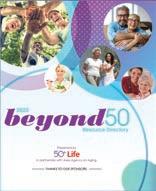
Research shows that hearing loss is linked with cognitive impairment and decline. Studies indicate that older adults with hearing loss have a greater risk of dementia than those with normal hearing. With hearing loss, memory and concentration decline more quickly.
A recent analysis determined that people who used hearing therapeutic devices, such as hearing aids, had a lower risk of long-term cognitive decline than those with uncorrected hearing loss.
If you already have hearing loss or are experiencing pain or ringing in the ears, take steps to keep it from worsening. Research on the interaction between hearing loss, cognitive impairment, depression, and isolation is ongoing, but results suggest that treating hearing loss can positively affect cognitive performance, especially memory.
If you have a hearing problem, the most important thing you can do is seek professional advice. Your doctor may be able to diagnose and treat you, or they may refer you to other experts, like an otolaryngologist; ear, nose, and throat doctor (ENT); or an audiologist, a health professional who can identify and measure hearing loss.

Identity theft is on the rise in the United States. According to the Federal Trade Commission’s Consumer Sentinel Network report, the number of reported cases more than doubled from about 650,500 in 2019 to 1.39 million in 2020.
Identity theft cases continued to grow nationwide in 2021, when a total of 1.43 million cases were reported to the FTC.
Identity theft is a crime that involves theft of an individual’s personal information and credentials — such as their Social Security number or bank information — often for the purposes of financial fraud.
One possible explanation for the surge in 2020 is the pandemic and the legislation that included more than $5 trillion in various government benefits to help financially strapped Americans. This provided a larger-scale opportunity for scammers and identity thieves.
In Pennsylvania, there were 54,460 cases of identity theft logged by the FTC in 2021, or 425 for every 100,000 people — the 14th-highest populationadjusted case rate among states.
All told, fraud and scams — including those committed through identity theft — resulted in $120.9 million in losses in the state in 2021. The typical fraud case in Pennsylvania resulted in the loss of about $400 last year.
All data used in this story is from the FTC’s 2021 Consumer Sentinel Network Data Book.
The National Council on Aging has launched Budget CheckUp, a free online tool that gives older adults practical tips on how to create a monthly budget and manage their money.

A grant from the Bank of America Charitable Foundation helped fund the tool’s development.
“Many older adults live on a fixed income, which is challenging when the cost of living and inflation are on the rise. The Budget CheckUp can help them stretch their dollars every month,” said Josh Hodges, NCOA’s chief customer officer.
“The tool offers guidance on how to create a monthly budget and decrease expenses, and it identifies programs that can help pay for medications and utilities.”
Users answer questions about their goals, such as what expenses they’d like to decrease, whether they are retired or a full-time caregiver, what benefits programs they are enrolled in, their age, and household income. Their responses generate a personalized plan of action to make the most of
their budget. NCOA does not collect any personally identifiable information, but users can create accounts to save their plans.
The Budget CheckUp is one of NCOA’s suite of online tools that are part of the Age Well Planner (ncoa.org/age-well-planner), which also includes:
• Job Skills CheckUp, which offers older jobseekers tips on how to create a resume, interview, and find a job
• Medicare Cost Estimator, which helps older adults see how much various plans might cost, depending on their health conditions
• Falls Free CheckUp®, which empowers older adults to discover their risk of a fall
BenefitsCheckUp® (benefitscheckup.org), a separate tool, enables older adults to see if they may be eligible for benefits programs to cover daily costs such as food and healthcare.
Q. How important is exercise when you are a senior? Is it worth the risks of hurting yourself?
All the current scientific evidence shows that geezers should exercise, even though many older people think it could harm them. Study after study demonstrates that older adults hurt their health a lot more by being sedentary.
If you’re inactive, you deteriorate. Physical activity can help restore your capacity. Most older adults, regardless of age or condition, will benefit from increasing physical activity to a moderate level.
Warning: If you want to begin a new exercise program, you should consult your physician and request a list of exercises that are best for your age and physical condition.

Four types of exercise are important for your health. These are exercises for strength, balance, stretching, and endurance.
Strength exercises build muscle and raise your metabolism. Doing these
Sweet bonded piggies, Honey (234570) and Hazel (234571), are looking for a home that’s big enough for two! Honey and Hazel have been best friends for the last two years, munching on the yummiest hay, chowing down on the crispiest veggies, and “popcorning” their days away.
Guinea pigs are very social creatures, so a home that ensures they are part of the action would be perfect for this curious pair.

Interested in learning more about Honey and Hazel? Visit them today!
Please send your application to the Lancaster Center for Animal Life-Saving at adoptlancaster@humanepa.org, or give the shelter a call at (717) 393-6551 to learn more.

exercises will help to keep your weight down. Balance exercises help prevent falls and, therefore, will keep you from breaking yourself and losing your independence. Each year, U.S. hospitals have 300,000 admissions for broken hips; many of them are the result of falls. Stretching exercises give you more freedom of movement. And endurance exercises raise your pulse and breathing.
Here are 10 tips to make any exercise program safe:
1. Don’t hold your breath during strength exercises. This could affect your blood pressure.
2. When lifting weights, use smooth, steady movements. Breathe out as you lift or push a weight, and breathe in as you relax.
3. Avoid jerking or thrusting movements.
4. Avoid locking the joints of your arms and legs into a strained position.
5. Some soreness and slight fatigue are normal after muscle-building exercises. Exhaustion, sore joints, and painful muscle pulls are not normal.
6. Always warm up before stretching exercises.
7. Stretching should never cause pain, especially joint pain.
8. Never bounce into a stretch; make slow, steady movements instead.

9. To prevent injuries, use safety equipment such as helmets for biking.
10. You should be able to talk during endurance exercises.
Measuring your progress can motivate you. Test yourself before starting to exercise to get a baseline score. Test and record your scores each month. The following are some tests you can use, if your doctor approves.
• For endurance, see how far you can walk in exactly six minutes.
• For lower-body strength, time yourself as you walk up a flight of stairs as fast as you can safely.
• For upper-body strength, record how much weight you lift and how many times you lift that weight.
• For balance, time yourself as you stand on one foot, without support, for as long as possible. Have someone stand near you in case you lose your balance. Repeat the test while standing on the other foot.
Remember, above all, exercise should make you feel better.
Fred Cicetti is a senior and health writer with more than three decades of experience. The Healthy Geezer is devoted to the health questions of seniors who are wondering what is going on with these bodies of ours.
Antiques expert, TV personality, and longtime 50 plus Life columnist Dr. Lori will be appearing at the Dauphin County Women’s Expo on Saturday, June 3, at the Hershey Lodge.
Dr. Lori will host her “Antiques Appraisal Comedy Show” from 11 a.m. to 1 p.m. on the expo stage.
Guests are encouraged to bring their antiques and thrift-shop finds for an appraisal. Dr. Lori will also share tips on how to sell your vintage objects for profit.
Dr. Lori is the star antiques appraiser on History channel’s The Curse of Oak Island and Pawn Stars and Discovery channel’s Auction Kings, and she appears on FOX Business Network’s Strange Inheritance.
An award-winning TV personality and TV talk show host, Dr. Lori has a Ph.D. in art history from the Pennsylvania State University.
EShe reviews approximately 20,000 items annually, presenting at more than 150 events every year and conducting in-home appraisal visits. She is the director of DrLoriV.com.

Dr. Lori has shared her expertise with Business Insider, NBC’s TODAY show, The Bobby Bones Show, Anderson LIVE , Comedy Central’s The Daily Show with Jon Stewart, NBC’s The Tonight Show, Inside Edition, Newsweek, People, and Lifetime Television, for which she has contributed a blog.
She has served as an editor of several lifestyle magazines and is an internationally syndicated columnist — her Art and Antiques column has run in 50 plus Life for more than 15 years — as well as an author with 30 books to her credit.

Dr. Lori is a graduate of the University of Michigan at Ann Arbor and Wesleyan University.
She has served on the faculty at Penn State University, State University of New York, Pennsylvania Academy of the Fine Arts, Albertus Magnus College, Arcadia University, Southern Connecticut State University, and Muhlenberg College.

Dr. Lori has held museum positions at the Yale University Art Gallery, the Allentown Art Museum, Muhlenberg College, and the Palmer Museum of Art at Penn State University.
Brought to you by OLP Events, the 10th annual Dauphin County Women’s Expo will be open 9 a.m. to 2 p.m. on June 3 at the Hershey Lodge, 325 University Drive, Hershey.

Admission and parking are free. For more information, visit agreatwaytospendmyday.com, call (717) 285-1350, or email info@ onlinepub.com.

Even before he became a successful and respected musician, Gerry Rafferty had developed a loathing for the often-underhanded machinations of the pop-music industry.
He was born in 1947 in Paisley, Scotland, a town that borders Glasgow, Scotland’s largest city. Rafferty came from a working-class family, where his mother taught him Scottish and Irish folk songs. As he grew into his teens, he became influenced by the music of the Beatles and Bob Dylan.
His father was a hot-tempered alcoholic who died in 1963, when Rafferty was 16. That year, young Rafferty left school to work in a butcher store and a shoe shop, although deep down he wanted only to earn a living by making music.
On weekends, he and best pal Joe Egan played in a local rock band called the Maverix, primarily offering up covers of Beatles and Stones hits. Rafferty later joined a folk-pop group called the Humblebums, which included future comic star

Billy Connolly. The Humblebums cut a pair of albums for Transatlantic Records, which received critical appreciation but sold poorly.
When the Humblebums disbanded in 1971, Rafferty continued with Transatlantic as a solo performer and recorded his first album, Can I Have My Money Back? His creation received enthusiastic praise but was ignored by the recordbuying public.
In 1972, he and Egan reunited, this time to form a soft-rock outfit called Stealers Wheel. They promptly struck gold with “Stuck in the Middle with You,” which became a Top 10 single in America, the U.K., and Canada. That hit 45 gave Rafferty a chance to vent his spleen against the negative forces that controlled the music business.

In a voice that mimicked his idol Bob Dylan, Rafferty set the scene for his tune at a recordcompany party that made him uncomfortable being in the midst of the power people he always preferred to avoid:
Well, I don’t know why I came here tonight
I got the feeling that something ain’t right
Rafferty just wanted to make music, revel in the satisfaction of its creation, and ignore that part of the picture that included insensitive bean-counters and “friends” who were supposedly furthering his career:
Clowns to the left of me, jokers to the right
Here I am, stuck in the middle with you
He found his frustrations maddening:
Trying to make some sense of it all
But I can see that it makes no sense at all

Is it cool to go to sleep on the floor?
’Cause I don’t think that I can take anymore
Stealers Wheel cut a trio of albums, but by the time the first one was issued, Rafferty had already left the outfit. Stealers Wheel officially disbanded in 1975, and for three years Rafferty’s creative hands were tied by legal hassles that prevented him from releasing new material.
In 1978, his 6-million-selling LP City to City featured his signature song, the worldwide hit “Baker Street.” As a result, his success brought Rafferty financial independence — thanks, ironically, to the industry that he despised.

Effectively managing your blood pressure can help reduce your chances of lifethreatening medical events, even death. Gain confidence and learn how to take control of your blood pressure with these tips and resources from the American Heart Association.
High blood pressure is often referred to as the “silent killer” because it typically has few, if any, noticeable symptoms but can lead to heart attack, stroke, heart failure, and even death.
Many people with high blood pressure don’t even know they have it. Some overlooked symptoms can include dizziness, facial flushing, and blood spots in the eyes.

The only way to know if you have high blood pressure is to regularly take an accurate blood pressure measurement. Understanding your results is key to controlling high blood pressure.

Blood pressure numbers of less than 120/80 mm Hg are usually considered within the normal range, yet it is important to talk to a doctor about your healthy range. Even if you fall within a healthy range, it can be beneficial to stick with hearthealthy habits like following a balanced diet and getting regular exercise.
While many risk factors for high blood pressure may be related to your age, gender, and family history, there are also risk factors you can change to help prevent and manage high blood pressure.

People at added risk may be those who engage in lower levels of physical activity, eat a diet high in sodium (particularly from packaged, processed foods), may be overweight or obese, drink excessive amounts of alcohol, and may have multiple chronic conditions.
Whether you’re making changes in your own life to combat high blood pressure or helping someone else, positive feelings and confidence are longerterm motivators to making health changes.

If you’re talking with friends, loved ones, or your doctor, be prepared to ask open-ended questions. Be curious and kind to yourself and others you may be helping.

You can reduce your risk of heart disease, stroke, heart failure, and even death with lifestyle changes and medication.
Watching your weight, especially if you are overweight or obese, can bring health gains; losing as little as 5-10 pounds may help lower your blood pressure.
Managing your stress by relaxing for short periods during your workday, at night, and on weekends is another productive practice.
If you have diabetes, it’s important to work with a doctor to manage the disease and reduce your blood glucose levels.
If you think you could have sleep apnea, getting screened for and treating the condition can also reduce your risk for developing high blood pressure.
When you have high blood pressure, medication may be an important part of your treatment. Follow the recommendations carefully, even if it means taking medication every day for the rest of your life.
When you’re discussing high blood pressure concerns with your healthcare provider, also be sure to talk to your doctor about overthe-counter pain relievers that may raise your blood pressure so you’re not creating a blood pressure problem while treating other concerns.
Learn more about monitoring and managing high blood pressure at heart.org/bptools. (Family Features)




Being the victim of a scam can be detrimental to older adults’ mental health, making them feel helpless, embarrassed, anxious, depressed, fearful, or distrusting of others. These feelings can affect physical health as well.

By being informed about common scams and taking steps to protect yourself from fraudsters, you can avoid becoming a victim.
One of the most common scams targeting seniors involves unscrupulous companies that claim to be selling comprehensive healthcare plans.
They falsely claim they are experts who provide government-sponsored health insurance policies, and some even claim to be affiliated with AARP or be providers of Medicare supplement insurance plans.
In reality, the plans these companies are selling are not comprehensive and have limited benefits. Some plans are medical discount plans rather than insurance plans, and they don’t offer adequate coverage.
These scammers create websites that look official, making it difficult to recognize that what they are offering is a scam.
Some scammers operate fake technical-support operations, which are
promoted through internet ads directed toward those needing technical support or password-recovery assistance.
When consumers click on these ads, they are provided with options for diagnostic testing. This fake testing will reveal that viruses are creating problems for their computers. This “testing” is a tool these companies use to convince seniors they need to purchase a service plan to remove these viruses and prevent further problems.
Seniors who are unaware of this scam and decide to purchase these service plans are putting their financial well-being at risk when they provide credit card information for payment.
These robocall scammers claim they can help seniors lower their credit card interest rates to as low as 0%. They claim they just need to confirm and collect some information to activate this discount.
Scammers involved in this scam trick consumers into providing their credit card numbers, Social Security numbers, and other personal information, which they use to apply for unauthorized credit cards in consumers’ names.
The new, lower-interest credit cards issued to consumers often have promotional rates that are low for a limited time and will eventually increase. Consumers can also be left on the hook for substantial bank fees or transaction fees.

“Be your own boss. Enjoy your golden years. Fire your boss and build your dreams.” These are just some of the claims you may have seen in ads made by scammers running business-opportunity schemes.
These ads make unsubstantiated claims that people who purchase their programs or sign up for their services can make thousands of dollars in a short time.
In reality, consumers end up paying thousands of dollars for worthless programs, and they will never get their money back. In addition to investing large amounts of money, many seniors have also ended up with loans or credit card debt to cover the cost of these financial scams.
There are several different types of money-transfer system scams that con artists use to steal money from unsuspecting consumers. Some may claim to provide transfer services for a fee to send money overseas.
Others may tell you that you’ve won a lottery or cash prize, and you need to send them money to cover processing fees and taxes. Some scammers pose as representatives from charities who want you to transfer money as a donation.
Another common way scammers use money-transfer scams is to pose as sellers on auction websites, such as eBay. When a consumer purchases a product and uses a money transfer to pay for it, the seller takes the money but doesn’t send the product.
Some scammers use fake real estate deals to steal money from seniors. These fake companies claim they are selling lots for residential development
The road of life contains more than a few curves …
If you experience insomnia, join the senior crowd. Researchers at the National Institute of Health say: “Prevalence of insomnia is higher in older individuals than in the younger population.” Older adults sleep less than younger folks.
The NIH researchers found seniors had 30% to 50% less sleep than a younger age group, but WebMD says older adults do not need less sleep as we age.

As I entered retirement, I had bouts of insomnia. Not only did I feel lousy during the day due to lack of sleep, I had concerns about my overall wellness.
Health sections of newspapers frequently address insomnia and its link to serious health issues, including Alzheimer’s disease.
Physicians can make recommendations about senior sleep problems, ranging from expensive prescription medicines to expensive bedding accessories. An inexpensive sleep remedy could be a book, especially an old book.
If your parents read you a storybook at bedtime, it may have established a reading-sleep pattern. As an older adult, you may be able to reestablish this pattern to relax. Relaxation reduces stress and can induce sleep. I am a believer in reading for sleep induction.
While I buy new and used hardcover and paperback books for bedtime reading, older books may be a greater sleep inducer. When I say “older” books, I mean books from the 1950s and 1960s. Old magazines from these eras might also work.
Why are older books sleep inducers? They have an additional advantage over new books. Reading new books may induce sleep. Reading and smelling older books may be a greater sleep inducer.
“Old book smell” is a term used to describe the breakdown of chemicals used to produce the book and the gradual degradation of the book’s pages. These two processes produce a distinct odor.
For me, “old book smell” has something of an intoxicating effect. It is a safer “intoxication” than I experienced when I took an evening cocktail to relax. For this reason, I keep old books on my bedside table.
As I read old books, I take off my glasses. This causes me to hold the old book close to my face. As I read, I am getting “intoxicated” by “old book smell.” Usually, within one hour I am asleep.
By my estimates, I am now sleeping an average of seven or more hours per night. I do not think I could have gotten this sleep improvement by reading from my mobile devices.
Prior to my practice of absorbing “old book smell,” I slept about four hours per night.
I credit “old book smell” and increased sleep with greater energy and creativity during the day. I also feel “old book smell” helps me address insomnia in a safe, cost-effective, and non-addictive manner.
Many other scents, such as lavender, may induce sleep. These can be expensive. To date, “old book smell” has not been bottled and commercialized by Madison Avenue.
If insomnia is a problem, talk with your physician. Consider your treatment options. Reading an old book might be a safe part of a successful health plan to address lack of sleep.
in new, luxury communities in foreign countries, often in Central America. They claim these developments will include luxury amenities, such as golf courses. They also claim that since these developments will be completed soon, the value of the lots will increase quickly, providing a large amount of equity for buyers.
These scammers often have colorful brochures that highlight how attractive the developments are, when in reality, the land is far away from utilities, out in the middle of nowhere, or not worth a fraction of the price paid. Sometimes scammers even use fake documents to sell land they don’t own.
This scheme involves companies that are giving away free trials of their products if buyers pay shipping and handling costs.
After unsuspecting consumers sign up for these free products, the scammers enroll them without their consent into an auto-delivery plan for more products at full price. Sometimes consumers are also charged full price if these free trials are not canceled within a short time.
Unscrupulous fraudsters have also used this method to scam consumers out of money by charging them for additional products they did not even purchase. These scammers sell a variety of products, including personal
care items, weight loss products, stop-smoking patches, and subscription programs.
Scammers often target seniors by selling fake anti-aging products that promise miraculous results. From fake Botox alternatives and face creams to youth serums and stem cell therapy treatments, the products are endless. Some companies make unsupported claims that their products can help cure medical conditions, such as Parkinson’s disease and macular degeneration.
Unsuspecting consumers can end up spending several thousand dollars as they sign up for expensive initial anti-aging treatments and then find out they need more treatments to achieve the promised results.
Some of these anti-aging products are nothing but placebos, and some may include harmful chemicals, such as formaldehyde.
If you have been the target of a scam, report it to the FTC by phone or online: (877) FTC-HELP or ftc.gov/complaint.
Filing a complaint can provide investigators with the information they need to identify scammers and prevent them from harming other people.
Article courtesy California Mobility (https://californiamobility.com/blog).
Did you know that you may be eating the equivalent of 22 teaspoons of added sugar a day?
The American Heart Association estimates that Americans consume over 110 pounds, or the equivalent of 22 5-pound bags, of added sugar every year.
The AHA limits women to 6 teaspoons of added sugar per day, while men should stop at 9. If you have certain health conditions, the limit is likely less.
Science has proven that the consumption of too much sugar can wreak havoc on our bodies. Both the AHA and Centers for Disease Control advise that the added sugars in sodas, baked goods, and processed foods are likely responsible for the rise of obesity in adults and children.
Furthermore, the ingestion of excess sugars is linked to many diseases, including cancer, food addiction, insulin resistance, dental cavities, fatty liver, Type 2 diabetes, and heart disease.
Whether natural or processed, all sugar is a type of simple carbohydrate that our body uses for energy. Naturally occurring sugars in foods such as milk, vegetables, and fruits are not the problem because they contain other nutrients and are often high in fiber. Processed and prepared foods hide the worrisome sugars.
Added sugars are found everywhere in the American diet, often lurking in foods we might think are healthy. About 80% of the 600,000 consumerpackaged foods sold in the United States contain added sugar.
Sugar hides in every aisle of the grocery store. Products known to contain hidden sugars include breakfast cereals, granola, yogurt, breads, soups, salad dressings, and pasta sauces.
The AHA states that sugar-sweetened beverages are the No. 1 source of added sugars in the American diet. Regular sodas, energy drinks, and sports drinks contain high levels of added sugars. Just one can of regular soda contains about 10 teaspoons of sugar.
Scientific studies report that drinking high levels of sugar-sweetened carbonated beverages is associated with a higher risk of coronary artery disease. Sugary soda, fruit juices, coffees, and teas are significantly linked to poor health outcomes.
Sugar: the sneakiest ingredient of them all. How do you know if a product contains added sugars?

To identify hidden sugar traps in our food, read the nutritional label, but also check the ingredients. Sugar is often disguised; there are 57 different names for it. Any ingredients ending in “ose” — such as dextrose, fructose, maltose, and sucrose — are sugars.
Additionally, the word “syrup” listed on the label is a sign of added sugars. Rice syrup, high-fructose corn syrup (the unhealthiest of all the sugars), malt syrup, oat syrup, and corn syrup are sugars.
Also, anything with “sugar” in the name — such as brown, cane, confectioners, and raw — is sugar. Other examples of added sugar include fruit nectars, juices, honey, agave, and molasses.
Excessive added sugar has many adverse health effects. Although consuming small amounts is perfectly healthy, we should try to minimize our sugar intake.
The best way to do so is to prepare our own healthy meals at home and avoid buying foods and drinks high in added sugar. Read the nutritional label and list of ingredients to find those “shameful sugars.”
1. Read nutritional labels and ingredients lists, and choose products with the lowest amount of added sugars.
2. Drink water, calorie-free drinks, or low-fat milk.
3. Drink coffee black or use Stevia for a zero-calorie, natural sweetener.
4. Choose breakfast cereals with less sugar.
5. Select reduced-sugar varieties of syrups, jams, jellies, and preserves.
6. Use olive oil and vinegar for salad dressing and choose marinades, nut butters, ketchup, and marinara sauce with no added sugars.
7. Choose nutrient-rich snacks such as vegetables, fruits, low-fat cheese, whole-grain crackers, and low-fat, low-calorie yogurt.
8. A homemade trail mix of fruit, nuts, and a few dark chocolate chips makes a tasty snack.
9. Use extracts like almond, vanilla, orange, or lemon in recipes.
10. Instead of sugar, enhance foods with spices such as basil, thyme, rosemary, ginger, cinnamon, or nutmeg.
The New Holland Band, under the direction of Dr. Ken Laudermilch, will present a free concert of hymns and classical favorites 7-8:30 p.m. Saturday, May 13, at Westminster Presbyterian Church.
The band, established in 1829, seeks to preserve, maintain, and advance its historical tradition of providing high-quality band literature performed at a consistently professional level.
Sponsored by the Westminster Music Ministry,

the concert will feature Westminster organist Frank Dodd.
Admission is free; a free-will offering will be taken to benefit the Westminster Concert Series. Plenty of parking, including bus parking, will be available. The venue is handicapped accessible.
Westminster Presbyterian Church is located at 2151 Oregon Pike, Lancaster. For more information, call the church office at (717) 3925909 or visit westpca.com/music.

Lancaster County Office of Aging invites community seniors to celebrate Older Americans Month with a free Barnstormers baseball game.
The Barnstormers will be playing the Staten Island Ferry Hawks at 11 a.m. on May 17 at Clipper Magazine Stadium, 650 N. Prince St., Lancaster.
County residents 60 years and older can bring their photo IDs to any Lancaster County Office of Aging senior community center to pick up a free voucher that includes the game, a hotdog, and a soda.

Vouchers are available 8:30 a.m. to 1 p.m. Monday through Friday (except where noted) on a first-come, first-served basis at the following locations:

Columbia Senior Center
510 Walnut St., Columbia (717) 684-4850

Elizabethtown Senior Center 70 S. Poplar St., Elizabethtown (717) 367-7984
Lancaster Neighborhood Senior Center 33 E. Farnum St., Lancaster (717) 299-3943
Lancaster Rec Senior Center 525 Fairview Ave., Lancaster (717) 399-7671
Lititz Senior Center 201 E. Market St., Lititz (717) 626-2800
Open Monday, Wednesday, Thursday
Millersville Senior Center 222 N. George St., Millersville (717) 871-9600
Open Monday, Tuesday, Wednesday
Next Gen Senior Center 184 S. Lime St., Quarryville (717) 786-4770
SACA Senior Center
545 Pershing Ave., Lancaster (717) 295-7989
For additional questions, contact Lisa Paulson, Lancaster County Office of Aging, at (717) 299-7979.
Resource Directory delivers information about essential local resources: health and wellness, legal, financial, home improvements, leisure, and, of course, living and care options.

Help them find you be being included in Lancaster County’s premier annual directory of resources for members of your community.
In Print & Online!
More information than ever is available to consumers. This publication zeroes in on a targeted market rather than using blanket advertising.
is a collection of businesses that understands the mindset, special needs, and wants of older adults and are willing to personalize their approach to the consumer.

is not comprehensive: Because there are fewer organizations listed than in the Yellow Pages or on the internet, you are more likely to get noticed.

The directory is cross-promoted in 50 plus Life and in On-Line Publishers’ other publications, giving maximum exposure. Contact your marketing consultant or call 717-285-1350 now to be included in this vital annual directory.

Ad closing date: June 23, 2023

Working together and sharing information and resources strengthens our community.
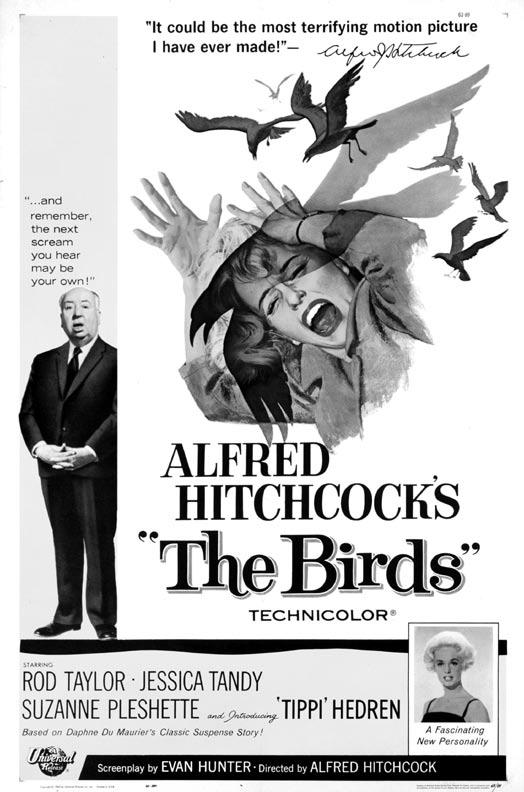
It was a scene of pure pandemonium: a flock of birds crashing into houses in a quiet California beach town, the crazed creatures smashing windows and attacking the residents whose frantic screams matched the agonizing shrieks of the interlopers themselves.
A scene from the 1963 Alfred Hitchcock horror movie The Birds, right? Actually, no. This event occurred for real two years before the great director’s now-classic release.
Following the 1960 success of Psycho, Hitchcock set about making a film meant to outdo what many critics have dubbed Hollywood’s first true horrorfest.
The Birds would be loosely based on a 1952 story of the same name by English writer Daphne du Maurier. In her novella, a British farmhand comes under an unexplained kamikaze-style attack by seagulls.
Hitchcock’s project was well underway when he heard about a bizarre phenomenon on the Central California coastal town of Capitola.
An article in the Santa Cruz Sentinel described hordes of disoriented birds divebombing the town in the early-morning hours of Aug. 18, 1961, crashing into homes and cars and spewing half-digested fish onto lawns and streets.
During the melee, some residents had stepped outside, flashlights in hand, only to find the birds rushing toward the light.
One woman said that half a dozen birds had tried to infiltrate her home. Eight residents reported being bitten. When dawn broke, the dead and dying creatures littered the town.
Understandably, the question nobody could answer at the time was, “Why did this happen?”

Hitchcock phoned the Sentinel’s editor and asked for a copy of the frontpage story. The Hollywood icon would later utilize portions of that account
when he had his scriptwriter alter some scenes for the upcoming feature.
Nobody understood the reason for that night’s attack in Capitola until three decades later, when it was decided that brown pelicans and cormorants along the Central California coast were falling ill due to poisoning from domoic acid, the result of a toxin produced by a sporadically recurring red algae.
It appears this toxin had also been the culprit behind the 1961 disaster. In that situation, the avian victims were sooty shearwaters, large, brown-and-gray seagull-like birds that annually migrate from the Southern Hemisphere.

The tainted food chain along the shore had moved from algae to fish to birds, the tragic results for the sooty shearwaters being brain damage, disorientation, seizures, and, eventually, death.
The hapless birds in Capitola hadn’t been evil or angry or murderous that morning; they had simply been sick and confused.
Alfred Hitchcock once said, “The Birds could be the most terrifying motion picture I have ever made.”
His 1963 apocalyptic movie focused on sudden and unexplained vicious bird attacks on the people of the small coastal town of Bodega Bay, California. (Capitola lies 145 miles to the south.)

An urban legend once claimed that the Capitola incident had been the basis for Hitchcock’s classic. That was untrue; in a textbook case of art imitating life, it had all been a matter of coincidence.



PA Medi offers beneficiaries assistance navigating the oftenconfusing Medicare system. They also help with Medicaid and other insurance questions. Topics are discussed in an unbiased and easyto-understand manner. Our volunteer counselors provide these objective services for free.
One must be available weekdays for online and face-to-face training, shadowing a mentor, and conducting counseling by phone and in person in our interview rooms at the Office of Aging. Most volunteers donate at least 4 hours per week. Volunteers are trained in these areas:
• Medicare eligibility and enrollment

• Medicare benefits, services through Parts A and B and Medigap
• Prescription Drug (Part D) plans
• Medicare Advantage Plans
• Medicaid, PACE and other financial assistance programs


• Assistance with the Medicare appeal process
• Long-Term Care policies
• How to make presentations during Open Enrollment
If you have questions or would like to join this fulfilling team of volunteers, please contact:
Kimberly Gitlen, Intake & Access Unit Supervisor using contact info below.
We are located at: Lancaster County Office of Aging 150 North Queen St., Suite 415 Lancaster, PA 17603 at KGitlen@lancastercountypa.gov or 717-299-7979




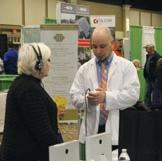






Villages at Greenfield
(formerly Eastwood Village) offers:
Independent Living, Assisted Living & two levels of Memory Care available in a scenic setting.


Expanded Memory Care now open - visit today for a tour!
A ordable rates, safe environment, and close to friends & family from a local, family-owned senior living company.




